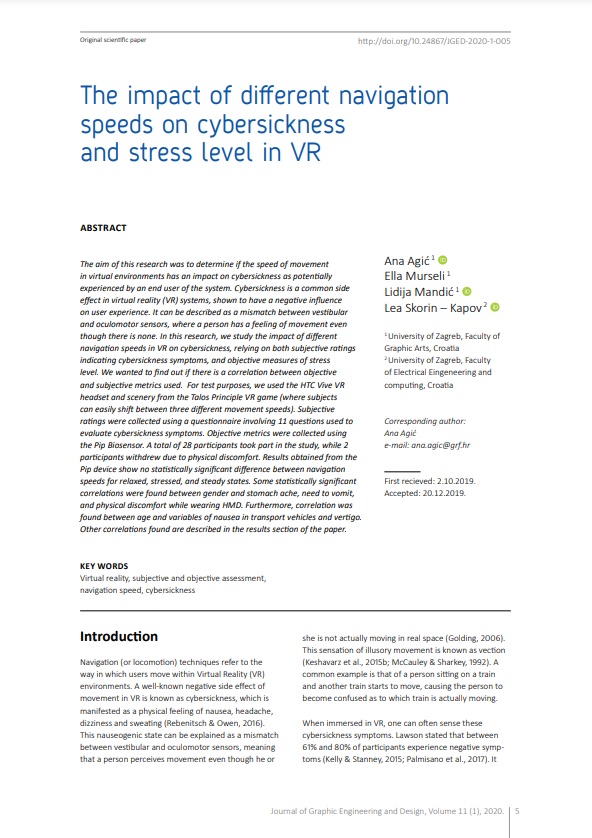The impact of different navigation speeds on cybersickness and stress level in VR

Published 2020-06-01
abstract views: 142 // Full text article (PDF): 111
Keywords
- Virtual reality,
- subjective and objective assessment,
- navigation speed,
- cybersickness
How to Cite
Copyright (c) 2020 © 2020 Authors. Published by the University of Novi Sad, Faculty of Technical Sciences, Department of Graphic Engineering and Design. This article is an open access article distributed under the terms and conditions of the Creative Commons Attribution license 3.0 Serbia.

This work is licensed under a Creative Commons Attribution 3.0 Unported License.
Abstract
-
The aim of this research was to determine if the speed of movement in virtual environments has an impact on cybersickness as potentially experienced by an end user of the system. Cybersickness is a common side effect in virtual reality (VR) systems, shown to have a negative influence on user experience. It can be described as a mismatch between vestibular and oculomotor sensors, where a person has a feeling of movement even though there is none. In this research, we study the impact of different navigation speeds in VR on cybersickness, relying on both subjective ratings indicating cybersickness symptoms, and objective measures of stress level. We wanted to find out if there is a correlation between objective and subjective metrics used. For test purposes, we used the HTC Vive VR headset and scenery from the Talos Principle VR game (where subjects can easily shift between three different movement speeds). Subjective ratings were collected using a questionnaire involving 11 questions used to evaluate cybersickness symptoms. Objective metrics were collected using the Pip Biosensor. A total of 28 participants took part in the study, while 2 participants withdrew due to physical discomfort. Results obtained from the Pip device show no statistically significant difference between navigation speeds for relaxed, stressed, and steady states. Some statistically significant correlations were found between gender and stomach ache, need to vomit, and physical discomfort while wearing HMD. Furthermore, correlation was found between age and variables of nausea in transport vehicles and vertigo. Other correlations found are described in the results section of the paper.


